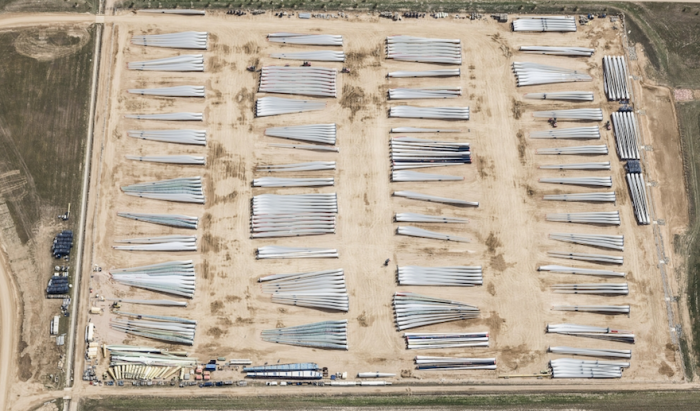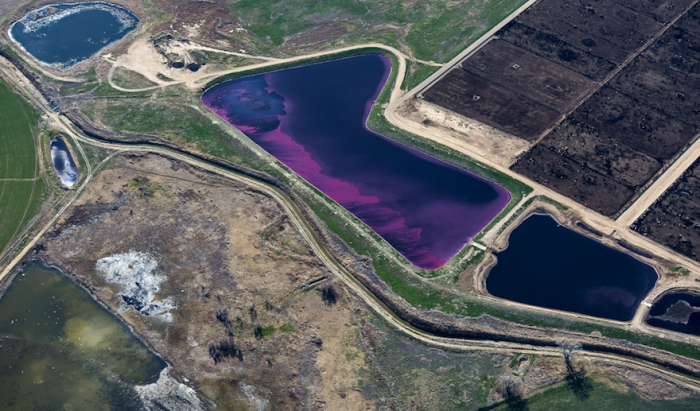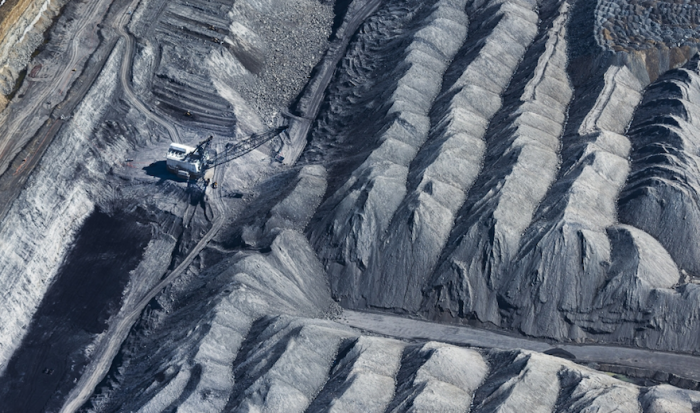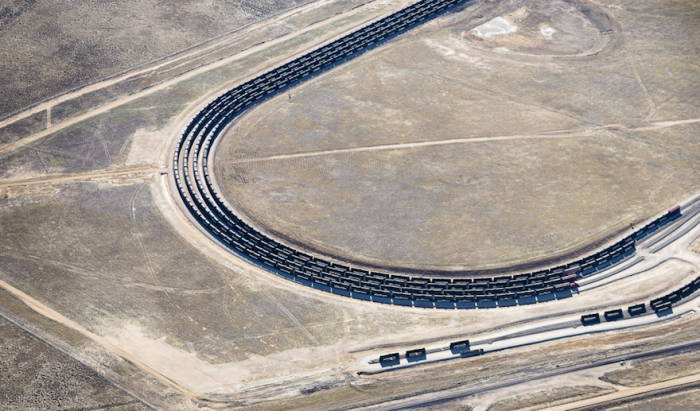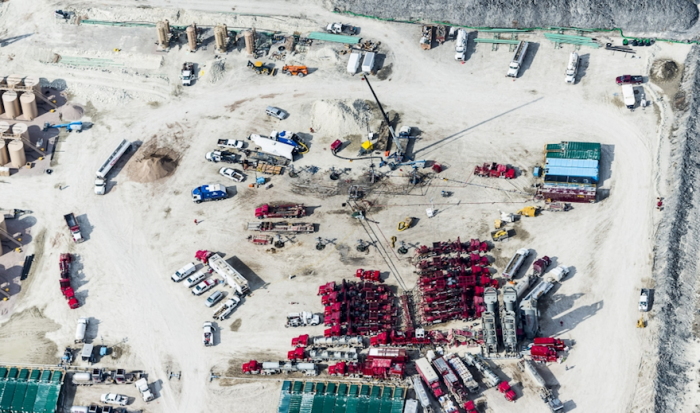US-based geologist and photograher Evan Anderman says eastern plains of Colorado have changed substantially over the past three years. While some of the changes are natural, human impact can be seen in the expanse of feedlots, fracking operations, and mining sites that dot the landscape.
“I have chosen to concentrate on the Eastern plains of Colorado because their subtle beauty illustrates global tensions on a local scale. They are sparsely populated regions of Colorado that are subject to a diverse mix of land use,” he writes.
Taking to the skies, Alderman photographed the changes to the once diverse landscape. His works form part of an exhibition titled, In Plain Sight.
“Vast expanses are given over to raising crops or grazing cattle, which if not carefully managed can decimate the landscape. The newest layer is the energy business, which until recently had only a small presence in the area. But it has been expanding rapidly, encroaching on or even overlaying the agricultural spaces. It is yet unclear if they can all coexist and how these changing dynamics will impact the landscape.”

